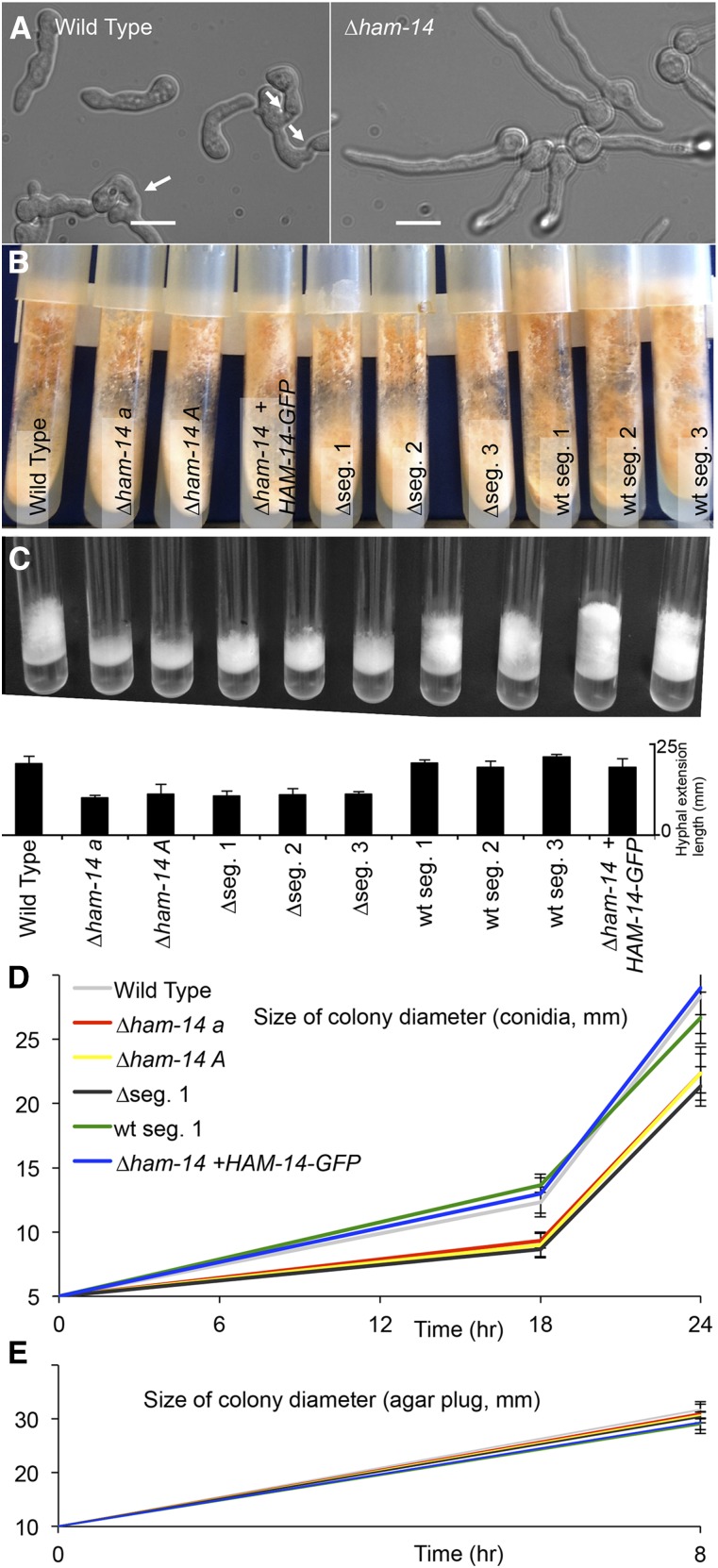Figure 3.
Growth and fusion phenotypes of ∆ham-14 strains. (A) Chemotropic interactions and cell fusion are absent in ∆ham-14 germlings (right), in contrast to WT germlings (left). White arrows point to fusing germlings. Bar, 10 µm. (B) The ∆ham-14 mutants (∆ham-14 a; ∆ham-14 A; ∆seg.1; ∆seg.2 and ∆seg.3 (segregants from a WT × ∆ham-14 cross that carry a deletion of ham-14) do not show a phenotypic difference from WT in agar slant cultures, with the exception of slightly shorter aerial hyphae. (C) The ∆ham-14 strains (∆ham-14 a; ∆ham-14 A; ∆seg.1; ∆seg.2 and ∆seg.3) show reduced aerial hyphae extension as compared to WT, the ∆ham-14; his-3::ham-14-gfp complemented strain and three segregants from a WT × ∆ham-14 cross that do not carry the ham-14 deletion. Top image shows macroscopic phenotypes and the bottom graph shows the hyphal extension length in millimeters for the different strains used. (D) Colony size measurements of WT (gray), the ∆ham-14 mat a (red) and ∆ham-14 mat A (yellow) mutants, the ∆ham-14; his-3::ham-14-gfp complemented strain (blue), one WT segregant (WT seg.1, green) and one hygromycin-resistant segregant carrying the ΔNCU07238 deletion (∆seg.1, black). Plates were inoculated with 5 µl of 1 × 106 conidia/ml (top graph) for each strain or with a 10-mm diameter circular agar plug from the edge of an already established colony from each strain (E).

